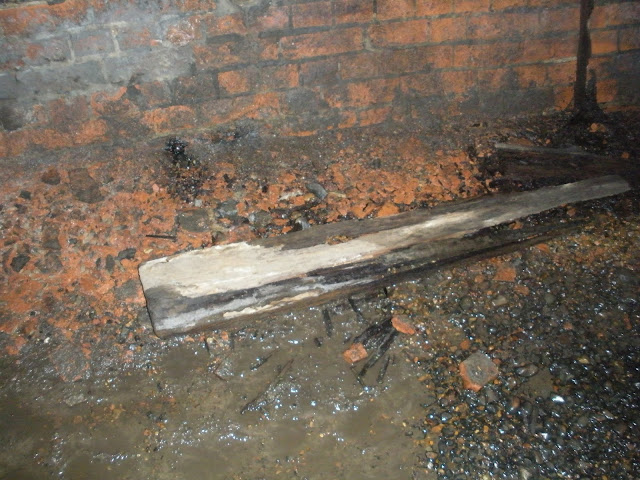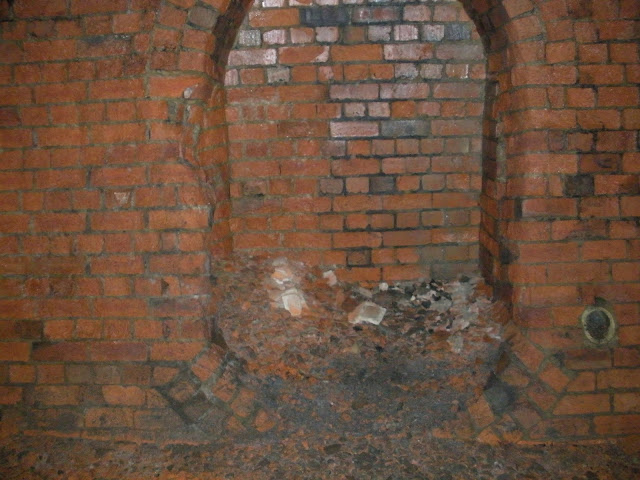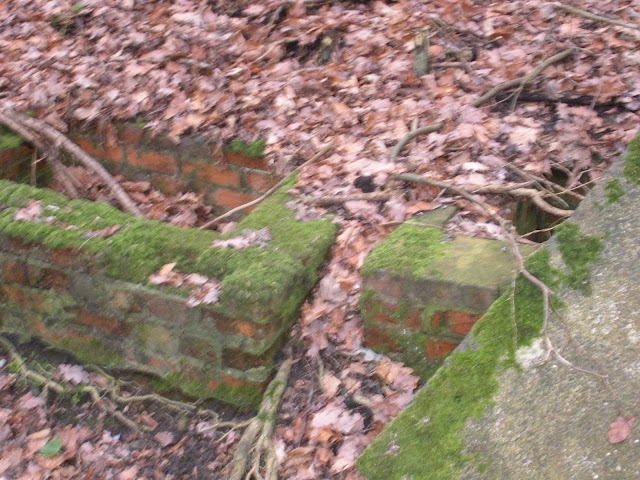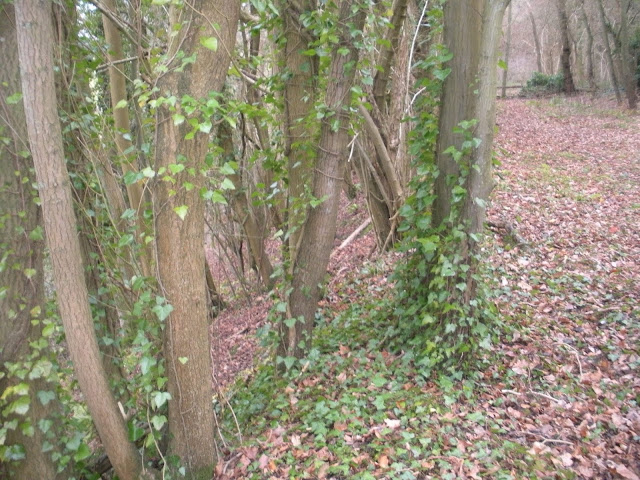This side of the tunnel we are in the Rother Valley as we begin to descend at last (at 1 in 80).
It was about half a mile from Hall Farm Bridge to Badgers Oak Tunnel as we set off southward from the tunnel towards Hawkhurst Station site to see how far we are allowed to walk before we encounter a 'Private' sign.
The track bed is dead straight at first as we emerge from the tunnel to find ourselves in a fairly deep cutting. Beautiful!
The tunnel, partially obscured by a fallen tree, seems a long way back already.
The cutting shallows out.
Old railway sleepers mark the original railway border.
Mixed with the earth and leaves is some railway ballast.
So far we have been going in a straight line, Badgers Oak Tunnel is back there in the distance.
I don't know what these bricks were part of? I do not believe that they were related to signalling, According to one book, Hawkhurst distant signal stood half a mile from the station but I do not think that the signals had brick bases. There were plate-layers huts scattered along the line, perhaps this was the base of one?
Update May 2020. As per Lord Tantrums comment, this was a maintenance hut. It had largely been constructed from railway sleepers but it did have a brick chimney.
At the bottom of a steep embankment I spotted one of the culverts that carried water under the line circa 1893, I guess this one was about two feet in diameter (and water was trickling from it into a ditch.)
Getting back up the steep embankment was challenging though, fortunately I remembered some of the skills I learnt in boyhood!
This walk has taught me a lot about the heavy engineering that was required to build this line, the surrounding hills are constantly undulating, but these embankments and cuttings were doggedly created with spades, muscle and sweat. I do admire the Victorian engineers, they had a 'can do' attitude, nowadays despite all the wonders of modern technology, Network Rail would complain that it would be virtually impossible to undertake such an enterprise and be 'vastly expensive'.
A view down from one of the higher embankments.
But!
Sadly a 'private' sign, gate, an awning and a caravan mark the end of the walk.
Checking Google maps later (after Richard's comment) I think we are close to Slip Mill Lane at a point about five hundred meters from the where the buffer stops stood. Usually I visit old parts of the line with some trepidation as I am often upset by the destruction that has taken place. Overall though I was very heartened today as I was probably able to walk for over a mile without encountering a fence or a 'keep out' sign. I would like to thank the landowners who obviously have an appreciation of history and who have generously allowed the public to visit this wonderful place.




























































